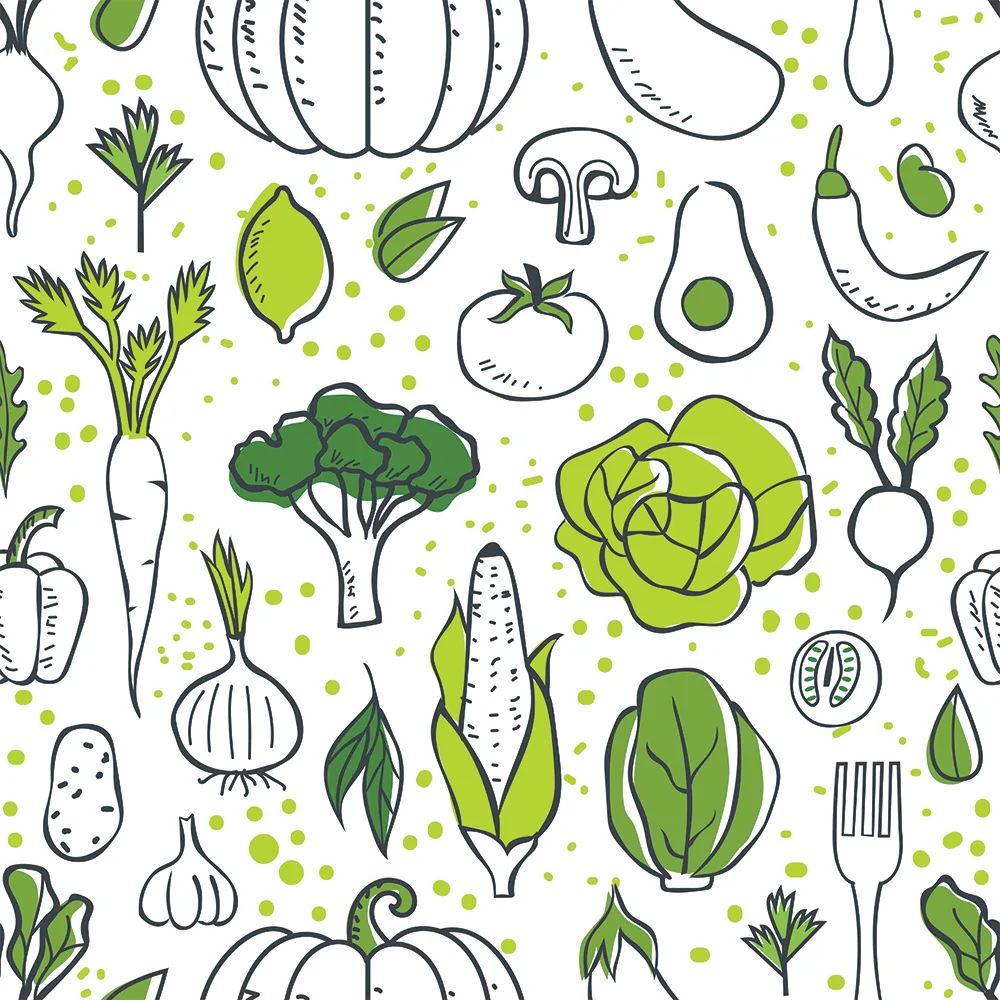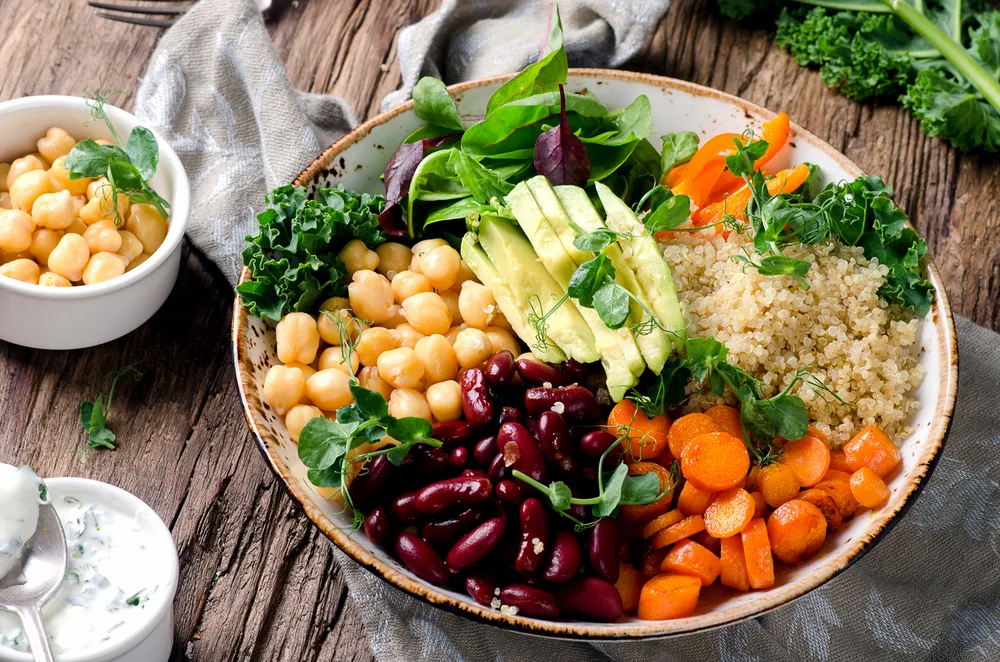It’s a way of eating that started to gain some attention a few years ago when ex-Beatle, Sir Paul McCartney, launched an initiative called Meat Free Monday.
The idea is simple.
The campaign encourages people to have at least one meat-free day each week, usually Monday.
Paul, a committed vegetarian, launched Meat Free Monday for conservation reasons but a growing number of people are reducing their meat intake for health reasons, too.
British research recently found around one in eight people say they are vegetarian or vegan and more than one in five people are ‘meat reducers’ or ‘flexitarians’.

Reducing your meat intake has positive health, financial and environmental outcomes (Image: Shutterstock)
The definition of a flexitarian is essentially someone who has a normally meatless or vegetarian diet but occasionally includes meat or fish.
It’s also referred to as casual vegetarianism – you don’t totally cut out meat, but you eat less of it.
The new vegetarianism “For a lot of people, the idea of being vegetarian makes them want to head for the hills but at the same time, they don’t mind vegetarian food when it is served to them,” says Clare Collins, Professor of Nutrition and Dietetics at Australia’s University of Newcastle.
“I’ve also heard a flexitarian defined as someone who consciously reduces their meat intake on three or more days a week.
“I like that definition and the idea of consciously cutting down on how much meat you eat without describing yourself as vegetarian.
“I think we are seeing more people following a flexitarian diet because of concerns about the impact of a high meat intake on the environment.
“For some people the choice is about animal liberation or equity. For others, eating less meat is a practical issue related to the cost of meat while some are interested in flexitarian eating for health reasons.”
Eating less meat is great for the environment
In terms of being kinder to the environment, eating less meat can have an important impact.
The Food and Agriculture Organisation of the United Nations says livestock is “one of the most significant contributors to today’s most serious environmental problems”.
Livestock production is responsible for 14.5 per cent of the world’s greenhouse gas emissions – other organisations place that figure closer to 50 per cent.
Whatever the true statistics, scientists agree that, by 2050, we need to reduce greenhouse gas emissions by a staggering 80 per cent to avoid climate change on a catastrophic scale.
Eating less meat could be one way to reduce those emissions.
Eating less meat can also be kinder to our health.
Research from the University of Oxford has found well-balanced and “predominantly plant-based diets can lead to improved nutrient levels and reduce premature deaths from chronic diseases by more than 20 per cent”.
“The food people eat impacts their health and the health of the environment,” says Dr Marco Springmann of the Oxford Martin Programme on the Future of Food.
“Unhealthy diets, overconsumption and hunger are leading to nutritional deficiencies and diet-related chronic diseases around the world. The food system is also a major cause of climate change, freshwater depletion, deforestation, and pollution of ecosystems, for example, through over-application of fertilisers.”

Eating less meat can also be kinder to our health. (Image: Getty)
Eating less meat improves health
The University of Oxford research found that replacing animal products with plant-based foods was particularly effective in high-income countries for improving nutrient levels, lowering chronic-disease mortality and reducing greenhouse gas emissions.
Chronic disease mortality was reduced by around 19 per cent with a flexitarian diet and by 22 per cent for vegans.
A flexitarian diet with plenty of whole foods such as legumes, whole grains, fruits, vegetables and nuts has also been associated with a lower risk of developing type 2 diabetes – as much as 20 per cent.
Other health benefits of consciously cutting back on meat in your diet include finding it easier to manage kilojoule intake, with better weight management.
“If you are flexitarian, you have to think about your food a bit more.
“You’re not eating meat so you’re relegated to vegetarian choices on the menu when you eat out or, if you’re cooking at home, you’ll include more vegetables and vegetarian sources of protein,” says Professor Collins.
“Generally, this means you will consume less kilojoules and less fat and you’ll eat more fibre which is filling and good for you.
“So, in the long term, your body weight will be lower.”
Lower blood pressure, less risk of cardiovascular disease and better metabolic health are also benefits of casual vegetarian eating.
“If you follow a diet that is higher in vegetarian foods or plant foods, you naturally eat less processed food and sodium – which has a negative effect on blood pressure.
“You also get a boost of potassium that counteracts the effect of sodium in your blood,” explains Professor Collins.
“Better metabolic health goes hand in hand with the benefits of reduced weight, lower blood pressure and eating less saturated fat.
“Plant foods don’t contain saturated fats – with the exception of nuts. And with a lower kilojoule intake, blood sugar levels will be lower and so reduce your risk of type 2 diabetes.”
How much meat is ok to eat?
The Ministry of Health recommends eating a maximum of 500 grams of cooked lean red meat per week.
A standard serve of cooked meat is about 100 grams. But many people eat much more than this, increasing the risk of bowel cancer.
The World Cancer Research Fund (WCRF) says there is strong evidence that eating red or processed meat, such as beef, veal, lamb, pork, ham, salami, bacon and some sausages causes colorectal or bowel cancer.
“The evidence on processed meat and cancer is clear-cut,” says Professor Martin Wiseman, World Cancer Research Fund International’s medical and scientific advisor.
“The data show that no level of intake can confidently be associated with a lack of risk.
“Processed meats are often high in salt, which can also increase the risk of high blood pressure and cardiovascular disease.”
The WCRF says meat can be a valuable source of nutrients including protein, iron, zinc and vitamin B12 and while people don’t have to completely avoid it, having three portions a week up to about 350 to 500 grams in total is enough.
Each portion of meat should be about the size of a deck of cards.
How to adopt a flexitarian diet

Replacing meat with vegetables and legumes is a great way to embrace flexitarianism. (Image: Shutterstock)
If you want to swap the meat-based meal on your plate for a flexitarian option, where do you start?
Stock up on tins of low-salt legumes, beans, lentils, chickpeas and red kidney beans. You can create a Bolognese sauce minus meat with kidney beans and red and brown lentils.
Similarly, add these kinds of beans to Mexican-style dishes and skip the meat. Or ease yourself towards a meat-free Bolognese by replacing half the meat with vegetables and legumes initially.
Create a flexitarian starter by rinsing a can of chickpeas, softening them in the microwave and then blending them with some lemon juice and tahini or aioli. Add in pumpkin, sweet potato or beetroot to make a dip for carrots, celery sticks or crackers.
Baked beans on toast topped with grilled tomato is a quick and nutritious snack.
“I have an old cookbook of war-time recipes that substituted meat because meat was rationed then,” says Professor Collins.
“A favourite recipe is patties made with mashed potato, canned beans or lentils, grated vegetables and finely diced onion.
“In summer, try sweet potato mash and stir in different canned beans, herbs, garlic, diced onion and egg.
“Chill them and then put them on the barbie. I cook double and freeze the rest for later in the week.”
Start your flexitarian eating plan by investing in some vegetarian cookbooks or sign up to websites that send regular vegetarian recipes that you can mix in with occasional meat dishes.
Meat Free Monday’s website includes a list of recipes.
“It takes a little planning and thought to replace the meat on your plate, but a lot of health pluses come with the decision to be flexitarian,” says Professor Collins.



